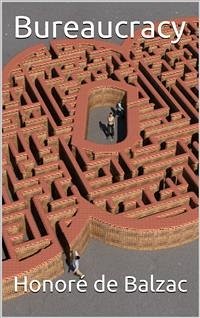The Bureaucrats is Balzac's study of the French bureaucracy under the reign of Charles X in the 1920s. It begins with about 100 pages of essentially prefatory material that serially introduces the dozens of characters that populate this novel, explaining where they came from, what role they play in the bureaucracy, and what their plans for the future contain. There are little bits of storytelling in the first part, but mostly Balzac is setting up the story--which takes up the next 150 pages of the book. It can be hard to keep track of all of the kaleidoscope of characters, bureaucratic positions, and machinations, but the basic story comes through increasingly clearly. The division director dies and needs to be replaced. Two bureau chiefs are jockeying for the position. The Minister has to make the decision, but mostly delegates it to his fixer, the Secretary-General, who himself is mostly focused on sleeping with one of the bureau chief's wives, getting out of debt, and becoming a Deputy. A large cast of bureaucratic underlings play an important role in the adroit and impressive machinations of the two camps. Ultimately, the good bureau chief loses out and the one who it would be overly generous to describe as a mediocrity ascends one rung up the ladder to become Division Director. All of the characters are recognizable and are presented as much as types as they are as individuals, but all of them are also unique and come to feel like individuals, albeit ones that generally do not evolve over the course of the book. In that way, it is typical Balzac, although the ratio of "types" in a study to characters in a story is higher in the case of The Bureaucrats", which has no one, for example, that approaches Lucien de Rubempré of Lost Illusions and A Harlot High and Low.









